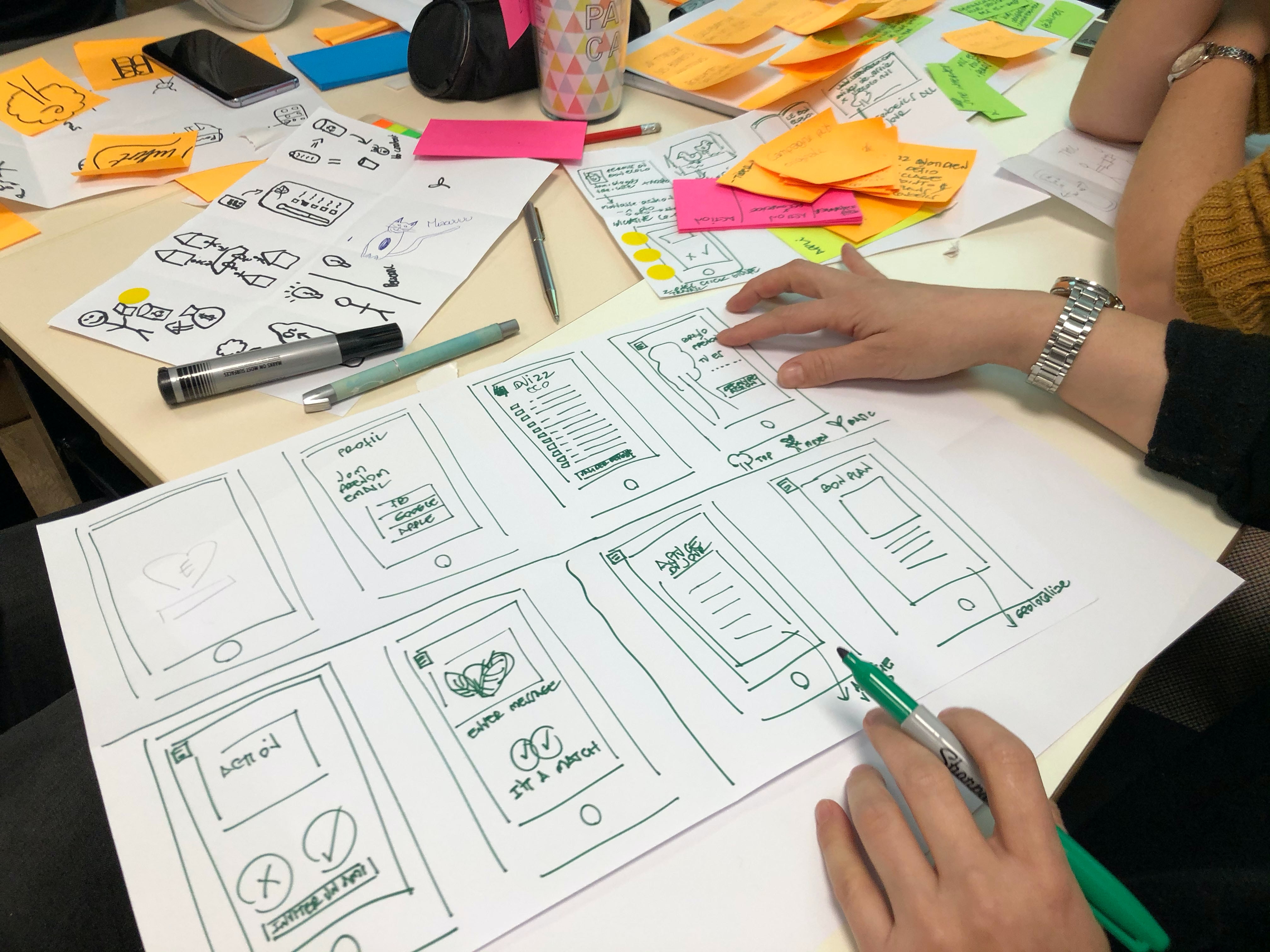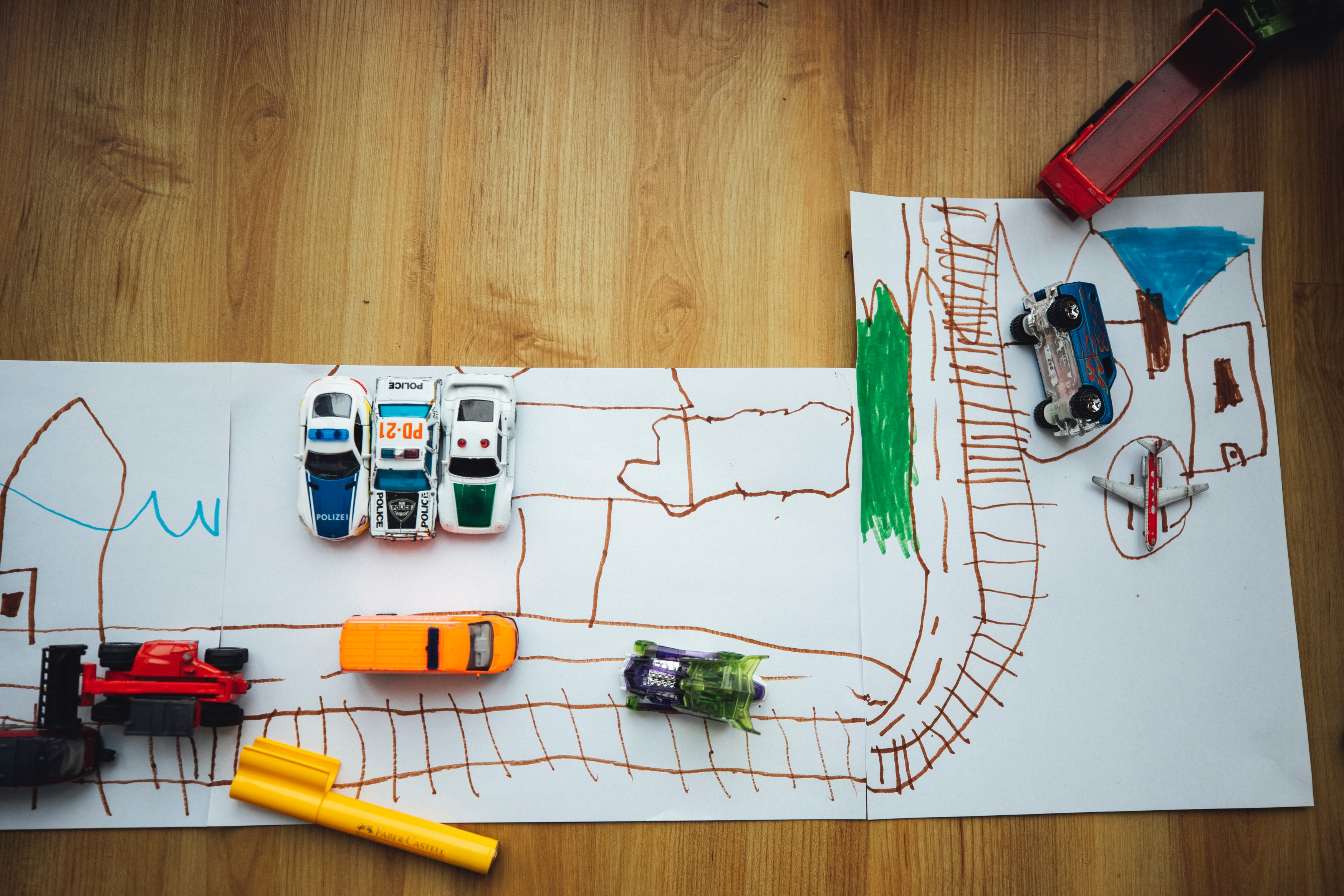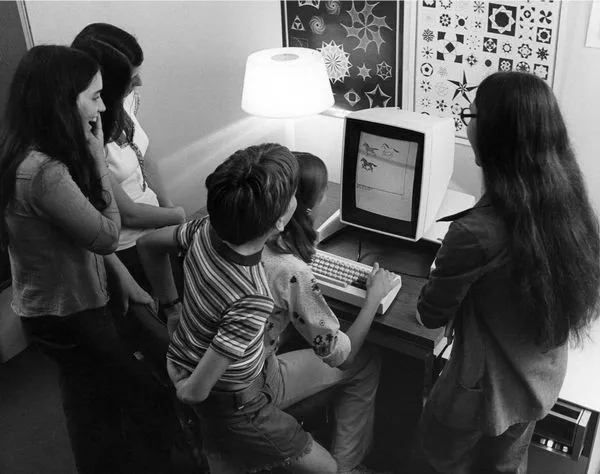Participatory design is a design methodology that incorporates the participation of end-users in the process of designing products, services, or systems. It is a collaborative approach that seeks to understand the needs, preferences, and experiences of users, and involve them in the design process. It is also known as co-design, user-centered design, or human-centered design. In this article, we will explore the concept of participatory design, how to implement it involving children and which are its difficulties and benefits.

Motivation
Participatory design is a response to the limitations of traditional design methods, which often rely on assumptions and abstract models of user behavior. These methods often fail to consider the diverse needs and experiences of end-users, leading to products that do not meet their needs. Participatory design seeks to address this problem by involving end-users in the design process from the beginning. In Read et al., 20021 they described it as a process in which more than one person is involved in the design part of the process where there is more than one stakeholder involved in the collaboration.
This method can be applied to a wide range of design projects, from the design of physical products to digital services and systems.
Participatory design with children
In recent years, the application of Participatory Design, especially with children designers, has become a popular means for the development of interactive computer products 2. The approach recognizes that children have unique perspectives and experiences that can inform the design of products and services that are better suited to their needs.
Despite the diversity of understanding of Participatory Design, the ethos at the heart of PD (as suggested by Read et al. 1) is active engagement of children in the design of new technology in order to both develop better technologies and give children a voice in the design process. The goal is to create products and services that are not only functional but also engaging and enjoyable for children to use.

One of the main concerns about involving children during participatory design studies is the role they play in. In that sense, Doorn 3 recently expanded the understanding of children’s role in PD by studying how children can act as co-researchers in design by gathering, sharing, and enriching contextual data. The various different categories of children’s roles can be represented by objective, process, and outcome measures as shown in the following table —an overview of children’s different roles in the design process adapted from Druin 4, Guha et al.5 and Doorn 6 and extended by a perspective on child as protagonist:
| Role | Objective of participation | Participatory process | Outcome measures |
|---|---|---|---|
| Child as user | Researchers test a general concept that may help inform future technology or provide better understanding of the process of learning which may contribute to future educational practices. | Children are observed, video-taped or tested before and/or after technology use. | Knowledge about children’s technology use and learning. |
| Child as tester | Researchers gain insights into children’s use of a particular technology and eventually improve that technology based on these insights. | Children test prototypes of a particular technology. | Knowledge about the usability, utility, and experimental qualities of the proposed technology. |
| Child as informant | Researchers gain insights to inform the design at various stages of the design process by eliciting and including children’s expert knowledge. | Children may be observed with existing technologies, or they may be asked for input throughout the entire design process. | Knowledge provided by children that relates directely to the technology designed. |
| Child as design partner | Researchers give children a voice in the design process. Children and researchers co-design new and meaningful technologies by means of partnership. | Children and researchers engage in various design sessions with a shared goal of designing new technology. | Empowerment of children by giving them a voice in design. Development of meaningful technologies. |
| Child as co-researcher | Researchers and children gain contextual knowledge by jointly studying children’s practices. | Children contribute to design by sharing, gathering, and analyzing data from their own use practice. | Knowledge about the design context and the possibility of incorporating this knowledge into new technology. |
| Child as protagonist | Researchers encourage children to be the main agents in driving the design process and thereby to develop skills to design and reflect on technology and its role in their life. | Children carry out a complete design process in which process and product reflection is a central component. | Children’s new insights into design and digital technology and reflective stance toward technology in their life. |
There are multiple examples such as Read et al.1 and Roussou7 showing different case scenarios involving children playing different roles. Most of them defend that Participatory design with children has numerous benefits, both for children and designers. Some of the key benefits include:
- Empowerment: Participatory design involves giving children a voice in the design process, which can help them feel empowered and valued.
- Engagement: When children are involved in the design process, they are more likely to be engaged and interested in the final product or solution.
- Creativity: Children often have unique and creative ideas, and involving them in the design process can lead to innovative solutions.
- Collaboration: Participatory design promotes collaboration among children, as they work together to create a solution that meets their needs.
- Learning: Participatory design provides opportunities for children to learn new skills, such as problem-solving, critical thinking, and communication.
- Inclusivity: By involving children in the design process, designers can ensure that the final product or solution is inclusive and meets the needs of all users.
- Fun: Participatory design can be a fun and enjoyable activity for children, which can lead to a positive attitude towards design and problem-solving.
Overall, participatory design with children can lead to more meaningful and effective solutions, while also promoting a sense of agency and empowerment among children. In general, when users are involved in the design process, they feel a sense of ownership and investment in the product. This can lead to increased satisfaction, adoption, and continued use of the product. Furthermore, it can lead to greater innovation and creativity. When designers collaborate with end-users, they are exposed to a wide range of perspectives and ideas. This can lead to the creation of innovative solutions that may not have been possible without them.
DynaClassroom
In the next series of posts, we are going to follow the DynaClassroom project. In this first blog post, let’s see what DynaClassroom is.
DynaClassroom aims to create an innovative interactive workspace for children, drawing inspiration from the Alan Kay’s Dynabook concept 8 and Bret Victor’s Dynamicland project, which seeks to develop a new computational medium that enables people to collaborate with physical objects in the real world.

A group of children learning to use the "interim Dynabook" (Xerox PARC Alto) ca. 1973
Based on Tangible User Interfaces (TUI) technology, DynaClassroom will create a friendly environment to learn through immersion with the difference of no screens nor devices. Any physical materials brought to life thanks to markers detectors and a bunch of cameras in the ceiling.
DynaClassroom is a community space to shape the future learning environment where children become the protagonist of their own learning journey.
Conclusion
We believe that collaborating with children in the design of learning environments is a crucial step towards creating more inclusive and effective educational settings. As designers, we recognize the importance of involving children in decision-making processes that affect their daily lives and learning experiences.
The DynaClassroom project is a work in progress, and we are looking forward to implementing the participatory design workshop with the children in the near future. By doing so, we hope to create a more meaningful and engaging learning environment that meets the needs and desires of the children.
In summary, involving children in the design of learning environments could be an effective way to create more engaging and effective educational media. The DynaClassroom project is an opportunity to test the power of collaboration between children, designers and educators, and we are excited to continue working together to create an innovative and inclusive learning environment that empowers children to thrive.
This R&D project has received a financial grant from the Immersive Content, Metaverse, and Web3 Projects Call, organized by the Ministry of Economic Affairs and Digital Transformation, through the Secretary of State for Telecommunications and Digital Infrastructure.
Picture Credits
- Header photo: Picture by La-Rel Easter from Unsplash.
- Picture by Amélie Mourichon from Unsplash.
- Picture by Markus Spiske from Unsplash.
References
- Read, J.C., et al., An investigation of participatory design with children-informant, balanced and facilitated design, in interaction design and children, (Preston, England, 2002). [return]
- Druin, A., et al., Children as Our Technology Design Partners. in Druin, A. ed. The Design of Children’s Technology, Morgan Kaufmann, San Francisco, 1999, 51-72. [return]
- Doorn, Fenne & Gielen, Mathieu & Stappers, Pieter Jan. (2014). Children as co-researchers: More than just a role-play. [return]
- Fenne Van Doorn. 2016. Children as co-researchers in design: Enabling users to gather, share and enrich contextual data, Doctoral thesis from T/U Delft, NL. [return]
- Allison Druin. 2002. The Role of Children in the Design of New Technology. In Behaviour and Information Technology, Vol. 21(1), 1–25. [return]
- Mona Leigh Guha, Allison Druin, Jerry Alan Fails. 2013 Cooperative Inquiry revisited: Reflections of the past and guidelines for the future of intergenerational co-design, International Journal of Child–Computer Interaction, Vol. 1(1), 14–23. [return]
- Roussou, M. (2007). Children designers in the museum: Applying participatory design for the development of an art education program. IDC ‘07: Proceedings of the 6th International Conference on Interaction Design and Children, 77-80. [return]
- Kay, A., and A. Goldberg. Personal Dynamic Media. Computer 10, no. 3 (March 1977): 31–41. https://doi.org/10.1109/C-M.1977.217672 [return]

